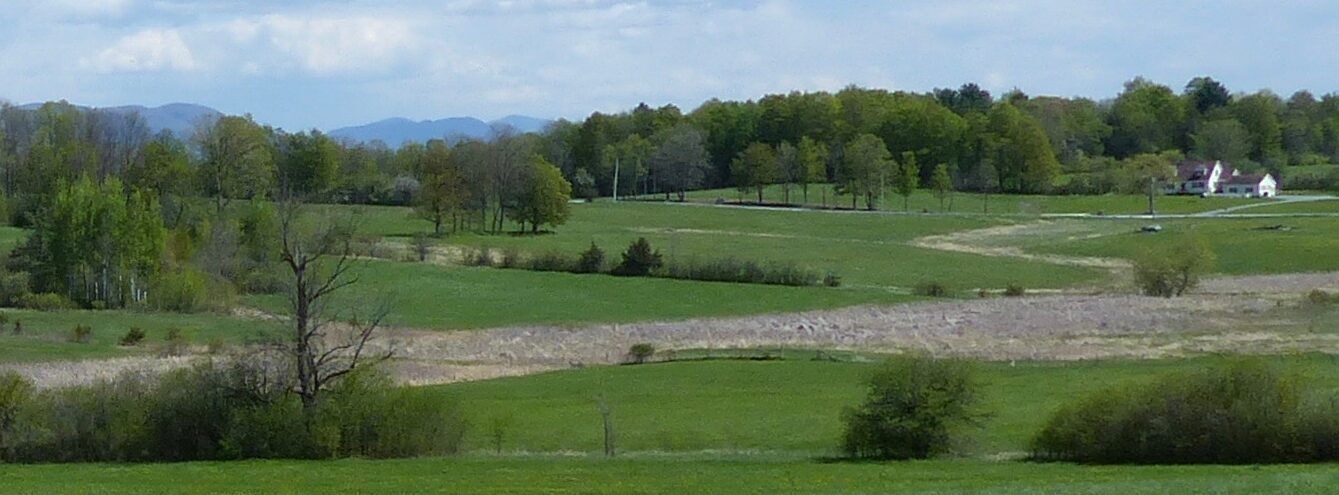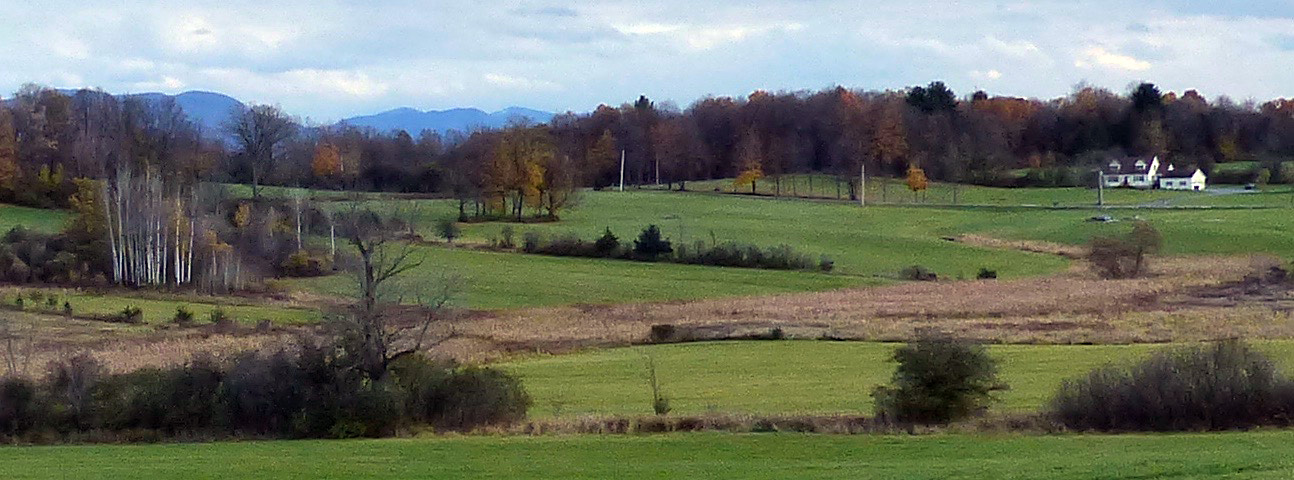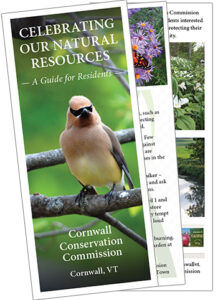"Conservation is a state of harmony between the people and the land."
MEMBERS:
- Mary Dodge, co-chair
- Kristina Sargent, co-chair
- Michael Sheridan
- Don Burns
- Andrea Landsberg
- Donna Marks
CONSERVING LAND
CONSERVATION RESERVE FUND:
2022-24 ACTIVITIES:
RECENT PROJECTS:
MISSION:
The mission of the Cornwall Conservation Commission is to engage in activities which assist the Town of Cornwall in identifying, understanding and protecting its significant natural resources and to advise and assist the Town in developing and maintaining plans and regulations that support the conservation of these resources.
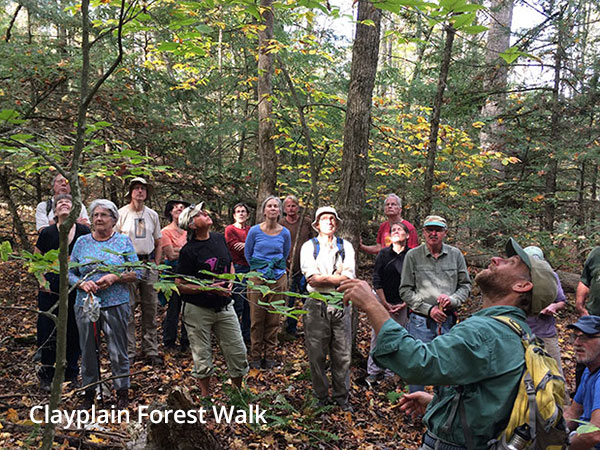
The Cornwall Conservation Commission is authorized by the State of Vermont to carry out the following duties (see 24 V.S.A. Section 4325), among others:
- make an inventory and conduct continuing studies of the natural resources of the municipality
- make and maintain an inventory of lands within the municipality which have historic, educational, cultural, scientific, architectural, or archaeological values in which the public has an interest;
- recommend to the legislative body of the municipality the purchase or the receipt of gifts of land or rights thereto, or other property, for the purposes of this chapter;
- receive money, grants or private gifts from any source, for the purposes of this chapter. Grants and gifts received by the trustee of public funds shall be carried in a conservation fund from year to year to be expended only for purposes of this chapter;
- assist the local planning commission or zoning board of adjustment or the district environmental commission, by providing advisory environmental evaluations where pertinent to applications made to those bodies, for permits for development;
- cooperate with the local legislative body, planning commission, zoning board of adjustment, road committee or other municipal or private organizations on matters affecting the local environment or the natural resources of the municipality;
- prepare, collect, publish, advertise and distribute relevant books, maps and other documents and maintain communication with similar organizations; and encourage through educational activities the public understanding of local natural resources and conservation needs Commission members encourage residents to contact them with questions, ideas, proposals, or any matters related to natural resources.

HOW TO SUPPORT BIODIVERSITY AND WILDLIFE
In Your Backyard
Add more wildlife-friendly plants to your yard. Decrease the size of your mowed lawn and create areas that attract a variety of pollinators. A variety of host plants in your yard with flowers that bloom from spring through fall will attract the pollinators. Enhance wet areas with native, moisture-loving plants. If pesticides are needed in your yard, apply carefully and consider environmentally safe alternatives.
Use native plants around your house. In contrast to exotic species, native plants are part of cooperative communities of plants, animals and insects that rely on one another for survival and to compete against invasive species. For example, the primary food for most baby birds is the larvae of butterflies and moths. Audubon’s Native Plants Database lets you search by zip code to find wildflowers, shrubs and trees that attract birds and the National Wildlife Federation’s Native Plant Finder lists plants and the specific moths and butterflies each one hosts.
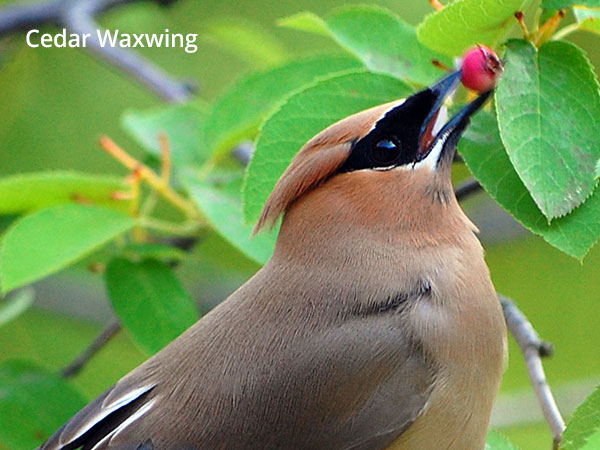
Cedar waxwings love serviceberry fruits in the spring.
Keep messy spots in your yard. You can attract wildlife visitors by keeping overgrown areas such as hedgerows or brushy tree lines. They are attractive to wildlife, providing safe cover for them as they move across otherwise open landscape. Protect existing bee nests and caterpillar host plants. Consider leaving leaves on your garden beds and delay a full garden clean-up until spring, after several 50 degree days. This allows overwintering pollinators to “wake-up” for spring and move on.
Find and remove invasive species. Non-native invasive plants including wild parsnip, buckthorn, purple loosestrife, multiflora rose, and shrub honeysuckle can quickly dominate an open area and threaten wildlife that depend on native plants. Keep invasives from spreading or remove them entirely. Visit vtinvasives.org for help with identifying and managing these plants.

Common buckthorn.--
Understand wildlife habitat needs. Be mindful of the affects of household noise, nighttime lighting, use of pesticides, pets running free, and physical changes to the forest on neighboring wildlife. The impact on wildlife from development can extend away from the house, up to 600 feet. Often wildlife still live nearby, but the species tend to be different, favoring generalist species that use a wide range of resource food and shelter. Make wildlife-supportive choices such as using yellow LED bulbs and motion sensor lights for nighttime illumination. This reduces illumination time and will attract 50% fewer bugs.
If You Are Planning to Clear in a Forested Area
Natural buffers around sensitive areas. Ideally the clearing of land or building should not occur close to sensitive features like steep slopes, ponds, banks of streams or wetlands. Keeping a natural buffer of trees, shrubs and grasses along the edges reduces erosion, provides important wildlife habitat and safety, and allows more secure corridors along which animals can travel. Consider a buffer of at least 100’ wide.
Understand your future impact on the woods and wildlife. New driveways, homes and outbuildings break up an existing forest into smaller pieces. This can disrupt natural wildlife corridors and creates more openings where invasive species and pests can spread. As a result, a new house can have a wildlife impact of 15-30 acres into the surrounding forest! If you are considering building a new home in a wooded area, locating it at the forest edge and/or near existing infrastructure will reduce these potential impacts.
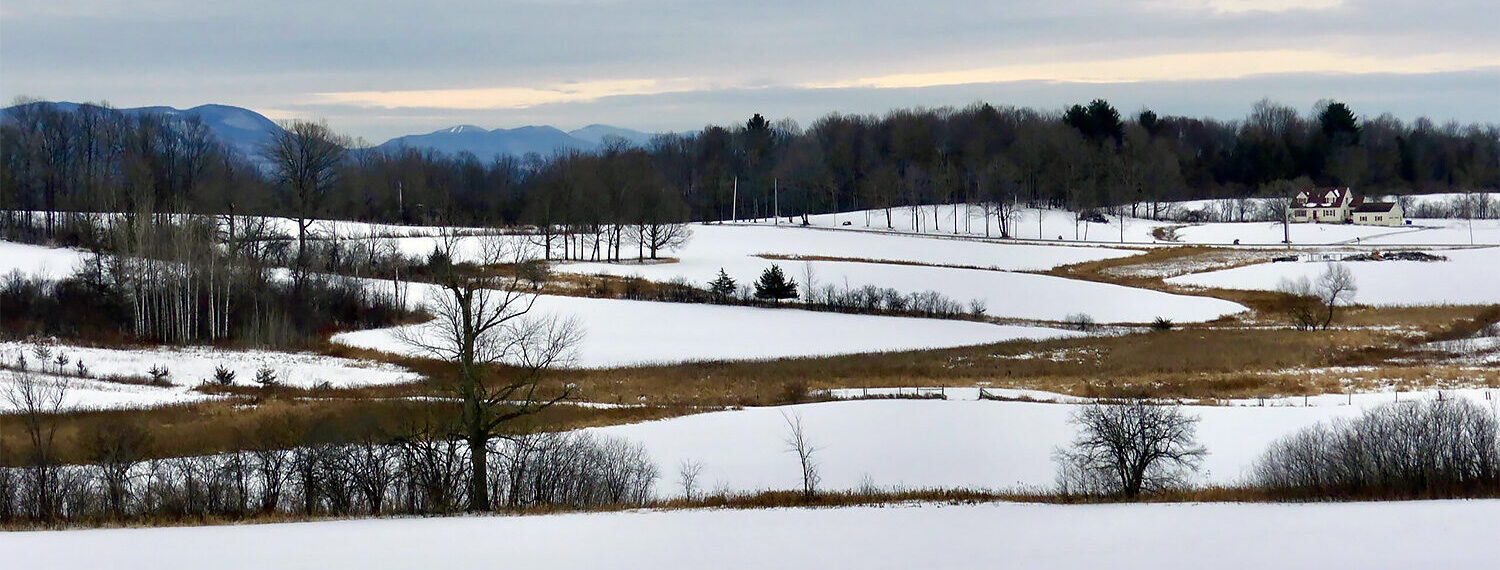
In Our Town of Cornwall
Support Forest Integrity.
Learn about Vermont Statute Act 171 which encourages municipalities to address the conservation of forest blocks, wildlife habitat, and habitat connectors, as well as support local forest products businesses, in their town plans.
Become familiar with Vermont Agency of Natural Resources' mapping of each town's most important forest and habitat connectivity blocks. Lobby Cornwall's Select Board and Planning Commission to adopt policies that minimize forest fragmentation, enhance forest health, and support essential ecological functions.
Support Forest Stewardship.
Learn about the statewide Forestry Stewardship Program, that encourages sustainable forest planning and provides forest owners with guidance in caring for their forest property.
Learn about and, if appropriate, consider enrolling your forest property in Vermont’s Forest Legacy Program which through easements conserves forest lands for the future. Consider enrolling in Vermont’s Use Value Appraisal Program. Eligible private lands of at least 25 acres with long-term forest, agricultural or conservation management plans can enroll and reduce landowner taxes. While enrolled, the land must remain in agriculture or forest and cannot be developed. Per acre taxation will be based on the State’s use value rate, which is substantially lower than its residential or commercial development value.
Looking Beyond the Town Borders
Addison County River Watch Collaborative. The ACRWC is one of a number of citizen water monitoring groups in Vermont whose volunteer members work to ensure the ecological integrity and the recreational viability of their communities’ watersheds including Otter Creek and Lemon Fair River. Consider volunteering to assist with the monitoring programs. More information here
Otter Creek Tactical Basin Plan. The OCTBP provides an assessment of surface water conditions within the Otter Creek, Little Otter Creek, and Lewis Creek watershed and identifies current and future strategies to protect high quality waters and restore impaired water resources. The Addison County Regional Planning Commission will be administrating and managing projects for the plan and currently is soliciting ideas for specific projects. More information here and here.
FURTHER INFORMATION & OPPORTUNITIES
Aerial Photos of Cornwall
Aerial Photos of Cornwall
How Maps Were Created
Conserving Natural Resources
“Make Room for Wildlife: A Resource for Landowners in the Northern Forest”
Native Plants Lists
- Vermont Lakes and Ponds Native Plant List
- Audubon Plants for Birds
- Native Plant Trust Plant finder
- Native Plant Finder
Vermont Conservation Design
This mapping resource was created by the Vermont Agency of Natural Resources to show Vermont’s network of connected lands and waters most important for maintaining ecological function.
Vermont Conservation Design - Summary Report - February 2018
Landowner Resources
- Backyard Woods Online Course
- Vermont Current Use Program
- Vermont Invasives.org
- Vermont Coverts: Woodlands for Wildlife
- Vermont Fish & Wildlife Landowner Resources
- Vermont Fish & Wildlife Landowner Guide
- Vermont Woodlands Association
Groups Supporting Conservation
- Addison County River Watch Collaborative
- Family Forest Carbon Program
- Middlebury Area Land Trust
- Otter Creek Audubon Society
- Pollinator Pathways of Addison County
- The Nature Conservancy
- Northeast Wilderness Trust
- Vermont Family Forests
- Vermont Alliance for Half-Earth
- Vermont Audubon
- Vermont Center for Ecostudies
- Vermont Land Trust
- Vermont Natural Resources Council
- Xerces Society
Other Resources
- Addison County Forester - Brandon Benedict
- BioFinder: VT Database and Mapping tool
- Burn Permits | Cornwall Fire Warden (349-2985)
- Department of Environmental Conservation
- District Game Warden | Wesley Butler (793-2757)
- Environmental Quality Incentives Program (EQIP).
- Hunter Safety Courses
- Otter Creek Natural Resources Conservation District
- Natural Resources Conservation Service
- Northern Woodlands Magazine
- Vermont Reptile and Amphibian Atlas

